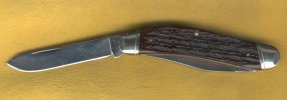- Joined
- May 19, 2001
- Messages
- 5,258
The BladeForums.com 2024 Traditional Knife is available! Price is $250 ea (shipped within CONUS).
Order here: https://www.bladeforums.com/help/2024-traditional/
Jack Black ugh that's awful..

Jack Black ugh that's awful..
 I've seen worse than that too
I've seen worse than that too And a very good example of what I was talking about. The question is, is that what the OP was talking about?

The trouble with that is, that it's very difficult to reach the surfaces that need to be filed without filing something you don't want to touch.

 But if you consider the first inch or less of the handle adjacent, you can see the blade is fit correctly!
But if you consider the first inch or less of the handle adjacent, you can see the blade is fit correctly!

